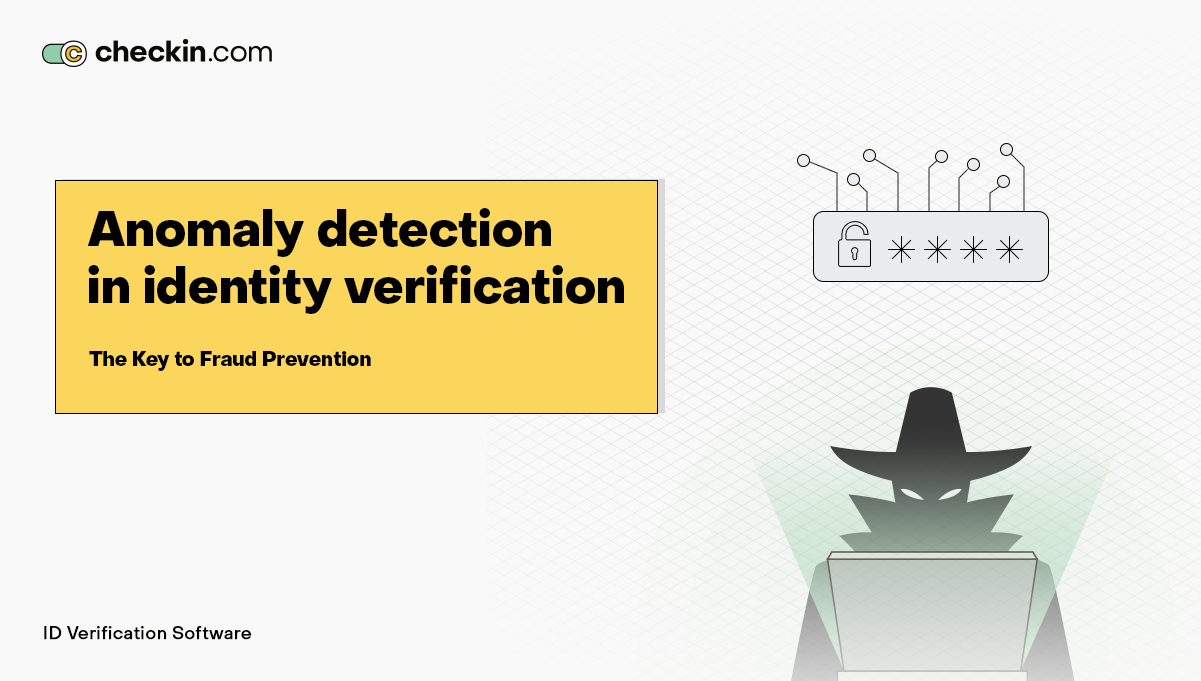
Anomaly Detection in Identity Verification: The Key to Fraud Prevention
7 May 2023
In the rapidly evolving landscape of id verification service, the ability to detect patterns and anomalies that signal fraudulent activities has become a critical focus.
Organizations worldwide are leveraging anomaly detection systems to stay ahead of fraudsters and protect their users. This article delves into the significance of anomaly detection in identity verification, its role in combatting fraud, and the strategies employed. Let’s explore!
Understanding Anomaly Detection in Identity Verification
Anomaly detection is the practice of identifying unusual patterns or behaviors that deviate significantly from established norms. In the context of identity verification, it involves recognizing activities or attributes that raise suspicion and may indicate potential fraud.
Advanced algorithms and machine learning techniques are utilized in anomaly detection systems to analyze large datasets and identify anomalies that may go unnoticed.
The Importance of Anomaly Detection in Fraud Prevention
Anomaly detection plays a pivotal role in preventing fraud within the realm of identity verification. Consider the following key reasons for its importance:
Identifying Suspicious Activities
Anomaly detection systems monitor user behavior and transactional data to swiftly identify suspicious activities. Unusual occurrences like repeated failed login attempts, sudden changes in account access location, or a surge in transactions within a short period can be flagged as potential anomalies. Such early detection enables organizations to take proactive measures, investigate further, and prevent potential fraud.
- Anomaly detection systems leverage data from various sources, including user behavior, transaction history, and device information, to identify potential anomalies.
- Machine learning algorithms enable anomaly detection systems to continuously learn and adapt to evolving fraud patterns, improving their accuracy over time.
Unveiling Emerging Fraud Patterns
Fraudsters continuously adapt their tactics to bypass traditional security measures. Anomaly detection helps organizations stay ahead by unveiling emerging fraud patterns. By analyzing data from various sources and leveraging machine learning algorithms, these systems can identify new patterns that indicate fraudulent behavior. This empowers organizations to adjust their security protocols and proactively counter emerging threats.
Strategies and Techniques for Anomaly Detection
Anomaly detection systems employ various strategies and techniques to identify patterns and anomalies in identity verification processes. Here are some commonly used approaches:
Statistical Analysis
Statistical analysis is a fundamental technique in anomaly detection. It involves analyzing data distribution, calculating mean and standard deviation, and identifying data points that significantly deviate from the expected norm. This method is particularly effective when dealing with numerical data or attributes with well-defined patterns.
Machine Learning Algorithms
Machine learning algorithms, such as clustering, classification, and neural networks, play a vital role in anomaly detection. These algorithms learn from historical data, allowing them to identify complex patterns and anomalies that may not be apparent through traditional statistical analysis. Continuously updating their models, machine learning-based anomaly detection systems adapt to evolving fraud tactics and improve accuracy over time.
Behavioral Analysis
Behavioral analysis focuses on monitoring and analyzing user behavior to detect anomalies. It establishes a baseline of normal user behavior by capturing data such as login patterns, transaction history, and device usage. Deviations from the established patterns, such as sudden changes in behavior or account access from unusual locations, can trigger alerts for further investigation.
Challenges and Considerations in Anomaly Detection
Implementing effective anomaly detection systems in identity verification comes with its own set of challenges. Consider the following considerations:
Balancing Accuracy and False Positives
Striking a balance between accurately detecting genuine anomalies and minimizing false positives is crucial. Too many false positives can lead to unnecessary friction and inconvenience for legitimate users, potentially damaging the user experience. Fine-tuning the system to minimize false positives while maintaining high accuracy is an ongoing challenge.
Data Quality and Volume
The effectiveness of anomaly detection heavily relies on the quality and volume of data available. Insufficient or inaccurate data can result in missed anomalies or false negatives. Organizations must ensure they have access to reliable and diverse datasets to train their anomaly detection systems effectively.
Conclusion
Anomaly detection serves as a powerful tool in combating fraud within the realm of identity verification. By leveraging advanced algorithms, machine learning techniques, and behavioral analysis, organizations can identify patterns and anomalies that may indicate fraudulent activities.
Swiftly detecting suspicious behaviors enables proactive measures to prevent fraud and maintain trust in digital transactions. As technology advances, anomaly detection will continue to play a vital role in safeguarding identities and securing the digital landscape.
FAQ
How does anomaly detection differ from traditional identity verification methods?
Anomaly detection focuses on identifying patterns and behaviors that deviate significantly from the norm, while traditional identity verification methods primarily rely on static data verification.
Can anomaly detection systems adapt to new fraud tactics?
Yes, anomaly detection systems leverage machine learning algorithms to continuously update their models and identify emerging fraud patterns.
What industries can benefit from anomaly detection in identity verification?
Anomaly detection is applicable across various industries, including financial services, healthcare, e-commerce, and government sectors, where securing digital transactions and protecting sensitive information is crucial.